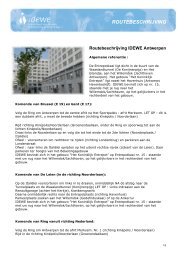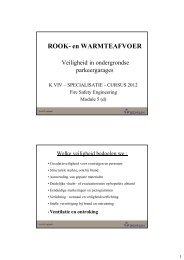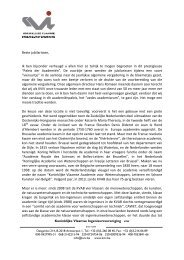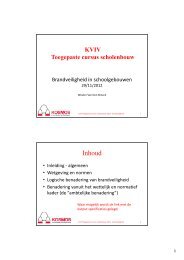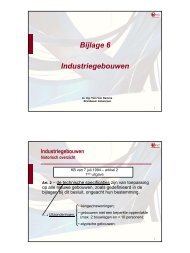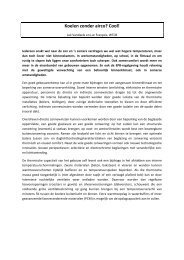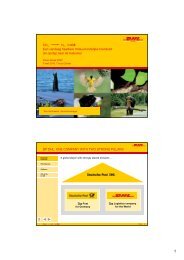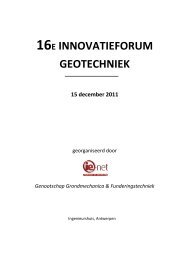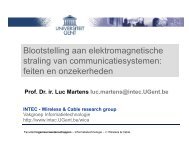Schoonbaert volledig - ie-net
Schoonbaert volledig - ie-net
Schoonbaert volledig - ie-net
You also want an ePaper? Increase the reach of your titles
YUMPU automatically turns print PDFs into web optimized ePapers that Google loves.
88 S. M. OLENICK AND D. J. CARPENTER<br />
experimentation as well as from more-sophisticated computer resources<br />
allowing for improved and faster computation methods to be employed.<br />
This increased use of modeling is also attributable to the move towards<br />
performance-based building codes in the United States and other countr<strong>ie</strong>s.<br />
Instead of using a prescriptive building code, engineers now can design for<br />
egress of building occupants in unique geometr<strong>ie</strong>s under varying fire<br />
conditions.<br />
Due to the growth in the use of computer modeling, most of the computer<br />
programs listed in the original survey have been updated in the last 10 years.<br />
Furthermore, numerous new models have been developed. Hence, an<br />
updated list of available computer models for fire and smoke transport is<br />
warranted. The goals of this project were to:<br />
(1) Update the survey information of the models identif<strong>ie</strong>d in the original<br />
survey.<br />
(2) Identify and survey new models developed since the original survey.<br />
(3) Include supplementary information about the models including contact<br />
information, availability, price, and additional references in response to<br />
a letter to the editor suggestion [135].<br />
(4) Provide a logical categorization of computer modeling programs, and<br />
include a description of each category.<br />
(5) Post the full, categorized results of the model survey on the Inter<strong>net</strong>,<br />
allowing access of these results to the entire engineering community.<br />
(6) Create a mechanism to update the survey periodically. This will allow<br />
ample time for model development, while not allowing the database to<br />
become outdated.<br />
The categor<strong>ie</strong>s chosen for computer fire models include zone models, f<strong>ie</strong>ld<br />
models, detector response, fire endurance, egress, and miscellaneous. The<br />
miscellaneous category includes models that have characteristics covering<br />
several of the categor<strong>ie</strong>s, making it difficult to be placed in a single category,<br />
or models that have unique capabilit<strong>ie</strong>s which do not allow them to be<br />
categorized anywhere else. These categor<strong>ie</strong>s are similar to those in the<br />
original survey [1] and to those outlined by Hunt [2], who provides a general<br />
description of each category.<br />
THE SURVEY<br />
While the original survey was intended to provide basic information<br />
about each model, this new survey is intended to provide a comprehensive<br />
index of models, and reference information for the model descriptions and<br />
background. The survey is not intended to be the sole informational source<br />
for a particular model, but instead will provide enough information so that




